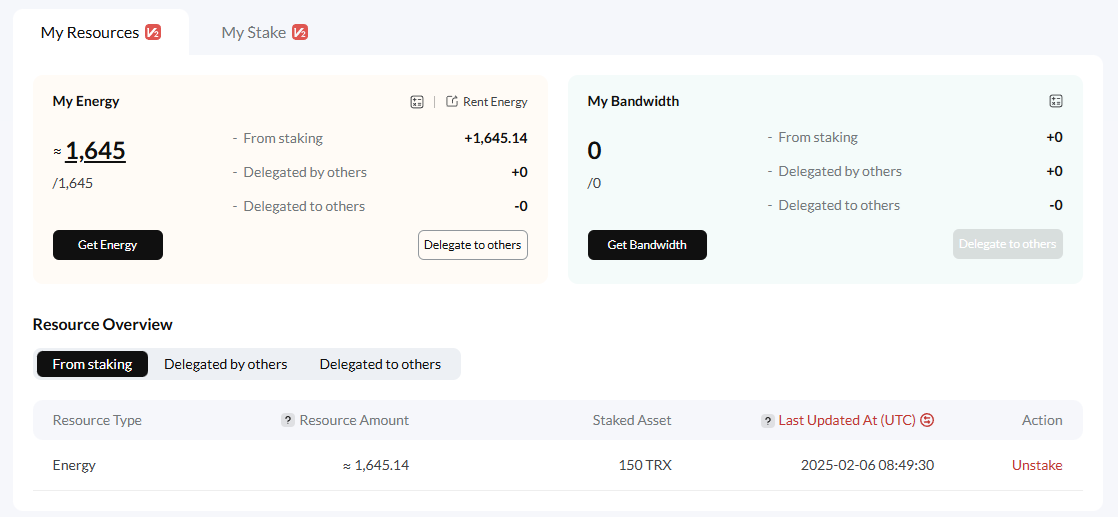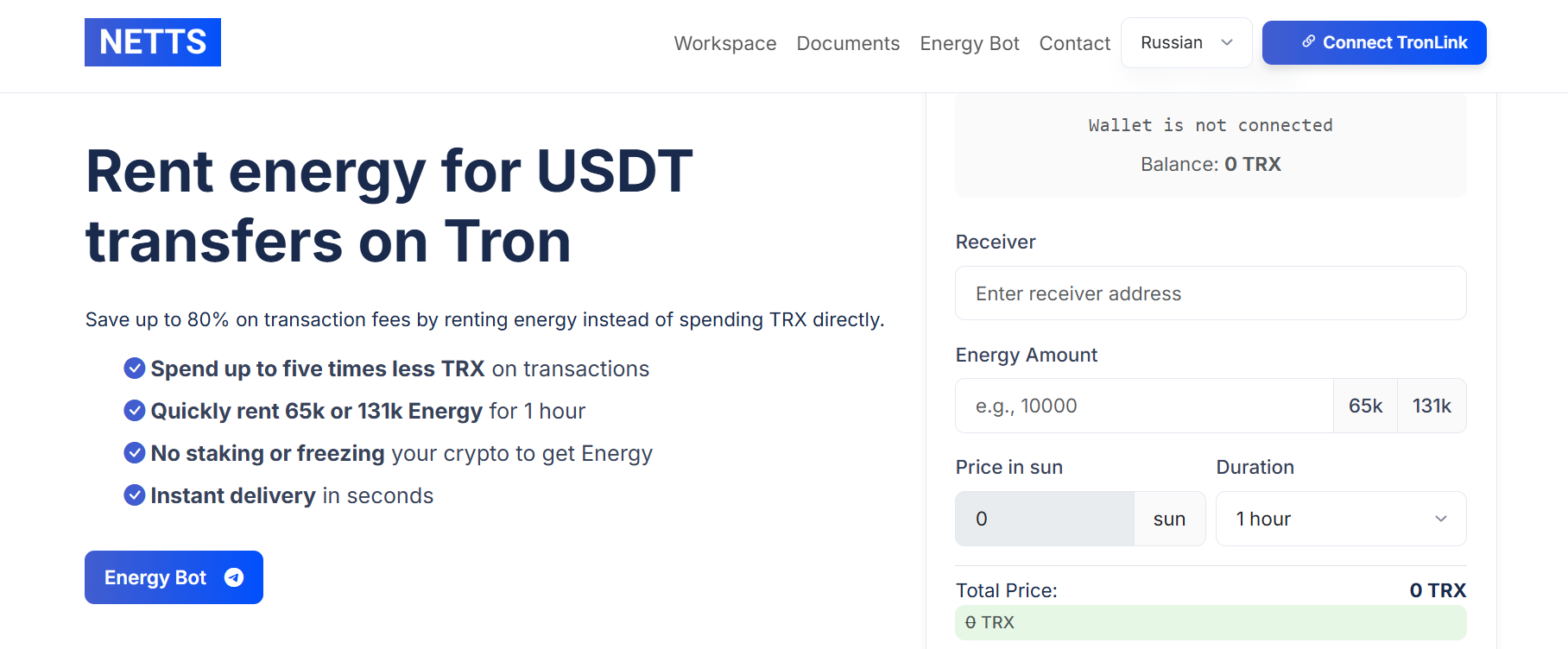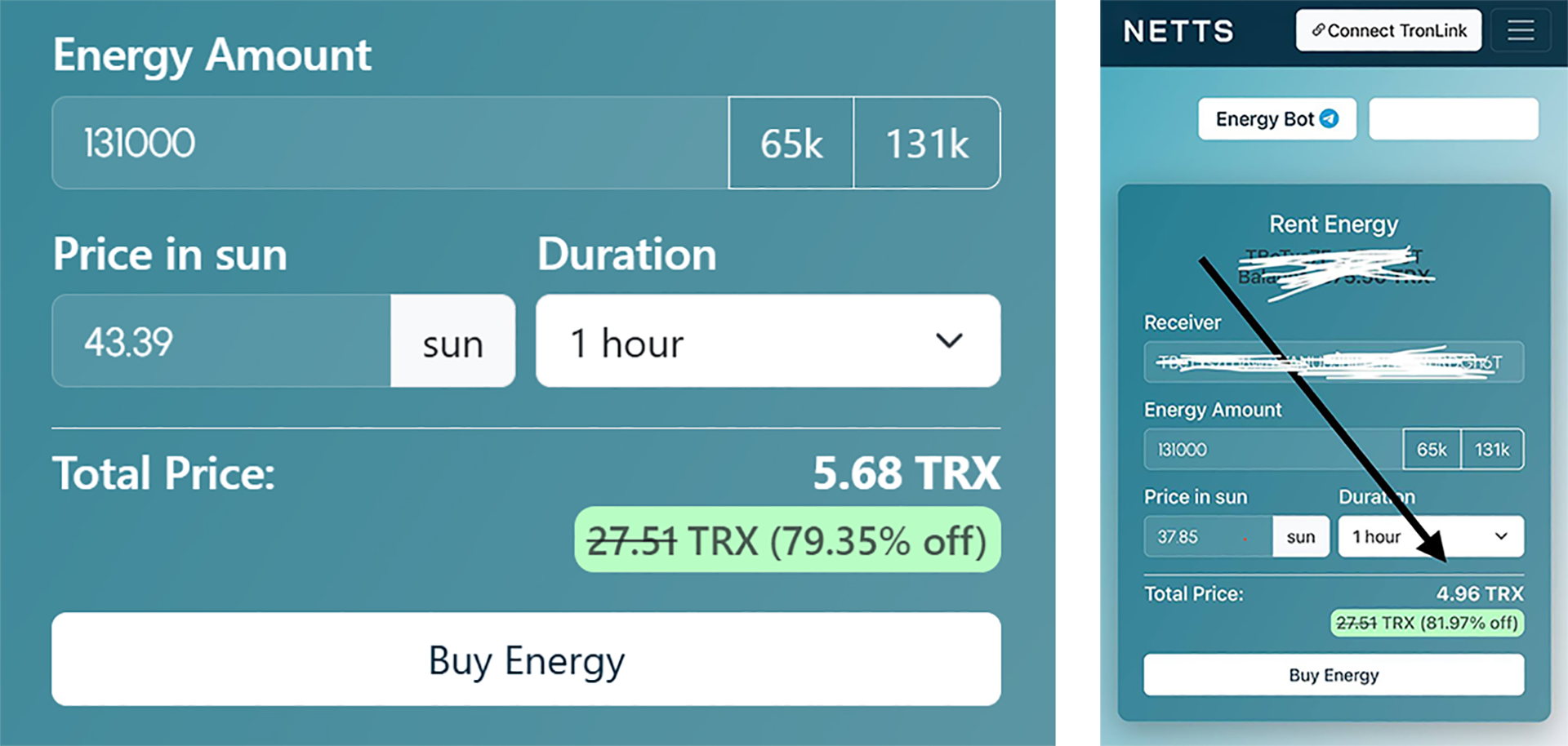How to Maximize Fee Reductions for USDT Transfers
USDT TRC-20 is the most popular stablecoin on the Tron blockchain, attracting users with its low fees and high transaction speeds. However, not everyone knows how to further save on transfers.

This article will detail how to maximize fee reductions when transferring USDT TRC-20 using various methods and strategies.
What is USDT TRC-20 and Why is it Important?
USDT TRC-20 is a TRC-20 standard token issued on the Tron blockchain and pegged to the US dollar (1 USDT = 1 USD). It allows users to make fast and cheap transactions worldwide.
Energy and Bandwidth Points
Two main resources are used to perform transactions on the Tron network:
- Energy: Required for executing smart contracts, including USDT TRC-20 transfers. If a user has insufficient Energy, TRX will be burned to pay the fee.
- Bandwidth Points: Used for all types of transactions, including TRX and TRC-10 token transfers. Each account receives 600 free Bandwidth units daily. A USDT transfer typically requires about 345 Bandwidth units.

A shortage of these resources leads to the system automatically deducting TRX from your balance to cover expenses, which can be significantly more expensive.
Key Strategies for Reducing Fees
Several effective methods exist to minimize commission costs when working with USDT TRC-20.
1. Using Energy Instead of Burning TRX
This is the primary way to save. Instead of letting the system burn your TRX, you can "freeze" (stake) TRX to obtain Energy.
- How it works: By freezing TRX, you receive Energy that can be used to pay for transactions. After unfreezing, the TRX is returned to your balance.
- Advantages: Significant fee reduction, as using Energy is cheaper than burning TRX.
- Disadvantages: TRX will be frozen and unavailable for other operations during the staking period (minimum 14 days after the last staking or vote acquisition). The amount of Energy received depends on the total amount of TRX frozen in the network.
Example: One USDT TRC-20 transfer to an address that already holds USDT requires approximately 32,000 - 65,000 Energy. If the recipient's address does not have USDT, it will require about 65,000 - 131,000 Energy. If you have no Energy, burning TRX will cost approximately 13.86 TRX (for an address without USDT) or 6.93 TRX (for an address with USDT) at current prices (subject to change).
2. Renting Energy
If you don't have enough TRX to freeze or don't want to lock up your funds, you can rent Energy from other users or through specialized services.
- How it works: Services like Netts allow you to rent the required amount of Energy for a specific period (e.g., 1 hour or 1 day). You pay a small fee to the service, which is significantly cheaper than directly burning TRX.
- Advantages:
- Savings up to 70-80%: Renting Energy through Netts can reduce your commission costs several times over.
- Flexibility: You can rent exactly as much Energy as you need, for the period that suits you.
- No TRX freezing: Your TRX remains liquid.
- Example from Netts: Renting 131,000 Energy for 1 hour for one USDT TRC-20 transfer to an "empty" wallet via the Netts service can cost around 3-5 TRX, while direct TRX burning would cost almost 14 TRX. The savings are clear.

The Netts service offers a convenient interface via its website and Telegram bot, allowing for quick and easy Energy rental. Netts also provides automated solutions for businesses via API, enabling automatic Energy rental when a certain balance threshold is reached (Smart mode) or continuous replenishment (Host mode).
3. Choosing Transaction Times
The Tron network, like any other, experiences periods of high and low congestion.
- How it works: During periods of low activity (e.g., nighttime or weekends UTC), fees may be lower due to less demand for network resources.
- Advantages: Additional small savings.
- Disadvantages: It's not always convenient to adjust to low congestion times. The effect may not be as significant as renting Energy.
- How to check congestion: Use the TronScan block explorer (Data -> Network section) to track current network congestion and Energy consumption.
Additional Savings Tips
- Check the recipient's balance: If the recipient's wallet already contains USDT, the transaction will require less Energy (about half). If possible, clarify this before sending.
- Group transactions: If you need to send USDT to multiple recipients, try to do so within one session when you have already rented Energy or are sure of its availability. However, each individual transaction will still consume Energy.
- Use wallets with resource management support: Some wallets, like TronLink, allow you to easily track and manage your Energy and Bandwidth.
- Beware of free Energy offers: These can often be fraudulent schemes. Use only trusted rental services.
- Automation for business: If you represent a business and make many transactions, consider integrating with Energy rental services via API, such as Netts. This will automate the process and significantly reduce operational costs.
Conclusion
Reducing fees for USDT TRC-20 transfers is quite achievable with a smart approach. Using Energy (your own or rented) instead of directly burning TRX is the key factor for savings. Energy rental services like Netts provide convenient and cost-effective solutions for both private users and businesses, allowing savings of up to 80% on commissions. Choose optimal transaction times and monitor your resource balance to make your USDT TRC-20 transfers as efficient and economical as possible.